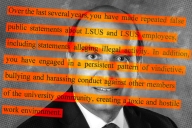You have /5 articles left.
Sign up for a free account or log in.

seamartini/Getty Images
Is admission by lottery the cure to all that ails the college admissions process? That notion rears its head every few years, and I have been (more than once) among the voices writing about that topic. My very first published article about college admission, in fact, was a 1988 back-page essay in The Chronicle of Higher Education that argued that random selection is the fairest way to allocate scarce slots at highly selective colleges.
A new study in the journal Educational Researcher questions whether admissions lotteries would be the panacea advocates envision. The article, “What If We Leave It Up to Chance? Admissions Lotteries and Equitable Access at Selective Colleges,” was co-authored by Dominique Baker, a professor of education policy at Southern Methodist University, and Michael Bastedo, a professor of education at the University of Michigan.
The major takeaway from Baker and Bastedo’s research is that the use of random selection in choosing whom to admit may not result in a more fair or equitable process. They ran 1,000 simulations on two cohorts of students, 1,400 ninth graders from the 2009 High School Longitudinal Study and 1,275 tenth graders from the 2002 Educational Longitudinal Study. They used grade point average and SAT score thresholds to predict admission by lottery to either selective or moderately selective institutions (based on Barron’s selectivity categories in place at the time of each study).
Baker and Bastedo conclude that the lottery approach would negatively impact the enrollment of several groups of applicants. Lotteries using middle 50 percent test score ranges would likely result in classes with a Black and Latinx population of 1 to 4 percent, and the test-score cutoffs would have to be closer to the 10th or 13th percentile to maintain current levels of enrollment for those two groups. A lottery based on GPA cutoffs would disadvantage male applicants, potentially lowering male enrollment by as much as 33 percent.
It’s an interesting study, and my summary may not do it justice. I’m trying to overlook the fact that their literature review does not include my contributions. But I also think the article raises some interesting questions about some larger issues and assumptions underlying the admissions process in general.
First and foremost is the assumption that the point of using random selection or any other selection method in a selective admissions landscape is to achieve a desired result. That is certainly the orthodox view today, where admissions offices at selective institutions craft their classes to achieve strategic institutional objectives ranging from revenue to diversity to athletic success. That approach serves institutions really well. The question is whether it serves society as well or at all.
One of the consequences of the Operation Varsity Blues scandal was a loss of public trust in the college admissions process. There is a widespread perception that college admission as currently constituted privileges the already privileged. One of the defense arguments in the recent trial was that the parents involved understood Rick Singer’s “side door” admission scheme to be business as usual. Are those of us in the profession OK with that perception? Should college admission be a reflection of society, or should college admission be countercultural?
At the heart of the loss of public trust in the admissions process is concern that the process is not fair. We all know that fairness lies in the eyes of the beholder. When my parents got divorced years ago, both wanted a settlement that was “fair,” but they had very different conceptions of fairness.
At least part of the concern about fairness is tied to the suspicion that selective colleges start with a conception of what the desired class looks like and then reverse engineer the process to achieve the result. That undoubtedly serves institutional interest, and quite frankly I would be tempted and inclined to pursue that strategy if I was an admissions dean. As a high school counselor, though, I ache for my students who apply to highly selective colleges, who are superbly qualified and worthy of admission but have no chance because they don’t contribute to achieving the desired result.
What obligation do colleges have toward applicants who spend hours completing applications and $80 for the right to be considered? The admissions process is an implicit contract between colleges and applicants that students will be considered on the merit of their credentials. Obviously what constitutes merit is open for debate, but an admissions process built on achieving a desired result does not meet that obligation.
The argument for a lottery or random selection has always been about means rather than ends, about how decisions are made rather than what outcome they produce. Selective college admission is at least partly a case study in distributive justice, in trying to allocate a scarce resource fairly or justly. Random selection gives every single applicant judged to be qualified for admission an equal chance to receive one of the scarce spots in the class of those admitted. Admission by lottery is also, as Baker points out in one interview about the study, “incredibly transparent.”
But what happens when a desirable means produces a less than desirable end? Are fairness and equity the same thing or competing values? Baker and Bastedo seem to argue that they are different, arguing that admissions lotteries “do not appear to produce more-equitable outcomes.” Baker has also been quoted that “statistically fair is not automatically equitable or just.”
No one, other than the political actors behind Students for Fair Admissions, who challenge race-based admissions preferences but seem unconcerned about legacy and athletic preferences, thinks taking a step backward with regard to diversity is a good idea. But if a lottery that gives each individual applicant an equal chance of being admitted produces a smaller pool of students in certain groups, is it the lottery that is flawed or the assumptions used to determine who is qualified to be part of the lottery?
Baker and Bastedo’s study uses SAT/ACT test scores and GPAs at various thresholds to determine who is included in the lottery. That is understandable, because both are easy to measure and plug in for purposes of a study. Both are shortcuts. Easy to measure is not the same thing as measuring effectively.
There has been a lot of attention paid to the predictive flaws inherent in test scores. Test scores represent performance on a three-hour test rather than four years of high school. There is a strong correlation between test scores and family income. Two test scores—one the result of hours of test prep and the other without extensive preparation—don’t mean the same thing. There is also, of course, the question of what exactly the SAT or ACT measure. They certainly can’t measure essential qualities like work ethic, grit and perseverance.
The same flaws exist with GPAs. A grade point average is a better measure of academic performance over a sustained period of time than test scores, but a GPA is meaningless without context. Two identical GPAs from two different schools may mean very different things. Grade inflation was rampant long before COVID-19, but the pandemic has resulted in eased grading in most schools. The more students who have a 4.0 GPA, the harder it becomes to differentiate among students. And use of GPA alone ignores a much better indication of readiness for college, the rigor of courses taken.
The goal of a lottery approach is to give equal consideration to every qualified applicant. But equal consideration doesn’t mean equal treatment. If use of test scores disadvantages Black and Latinx applicants, then ignore test scores and focus on strength of schedule and GPA as predictive metrics. Working at a boys’ school, I have always felt that junior- and senior-year grades, perhaps in conjunction with test scores, provides a more accurate snapshot of a boy’s readiness for college than cumulative GPA.
Baker and Bastedo argue that lottery results could be volatile from year to year. One year a college might have 10 percent diversity and then 2 percent the next. I am less concerned by that than I would be with a process that always results in low diversity numbers. One of the issues that could have gotten Harvard University in trouble in its case over Asian American admission (and could still, if that case ends up before the Supreme Court) was the argument that the percentages of different racial and ethnic groups were remarkably, even incredibly, consistent from year to year. Baker and Bastedo suggest that the only way to ensure consistent diversity would be to run a lottery within subgroups, but they recognize that would be illegal.
The Baker and Bastedo study is based upon the assumption of a national lottery. I don’t think we’re ready for that, but I have long wished that individual selective colleges and universities might engage in “counterprogramming,” choosing to make admissions decisions differently from everyone else. For example, one might look to fill its freshman class based on the values in the “Turning the Tide” reports.
I’d love to see one or two institutions serve as laboratories for admission by random selection. Admission officers would save reading time by not having to make distinctions among applicants but rather just have to determine whether an individual applicant is qualified for admission. There are also alternatives to a pure lottery. An institution might decide to use something like the NBA draft lottery, where certain applicants have multiple lottery tickets, whether for diversity reasons or reasons of academic excellence.
Are we ready for an admissions process using the “fickle finger of fate”? Anyone willing to take a chance on chance?








